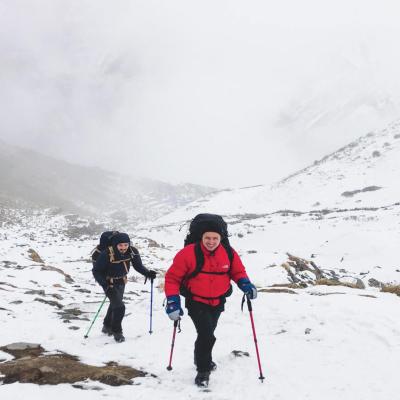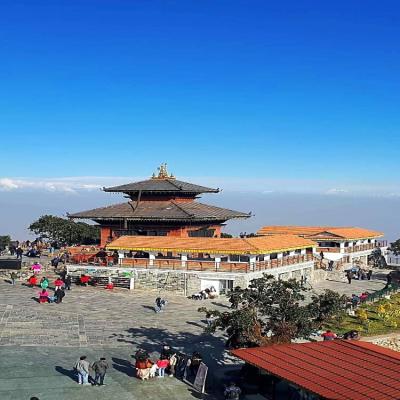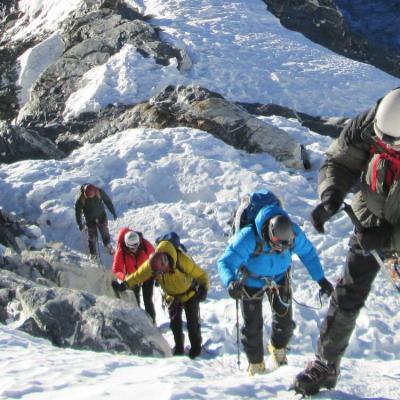Nepal
Of the ten highest mountains in the world, Nepal itself hosts eight of them, along with ancient Hindu and Buddhist religious sites. The Kathmandu Valley, where the country’s capital is located, is like an open museum with three of the regions’ oldest cities located within it. They are filled with medieval palaces, temples, statues, monasteries, pagodas, and stupas. Outside the valley, one sees heavenly sights of flora and fauna and, obviously, the majestic and mighty Himalayas. The Royal Bengal Tiger coexists with the magnificent Asian elephants in its southern forests, and the Snow Leopard prowls around among yaks on the northern slopes of the Himalayas.
As for the people of Nepal, they embody a diversity that cannot be found anywhere else. From the ethnic Tharus that live in the south and have thalassemic blood, making them immune to malaria, to the Sherpas in the north who have genes that make them almost immune to altitude sickness, Nepal boasts more than 130 ethnic groups, each with their own history and culture. More than 2500 years ago, Siddartha Gautama, most commonly known as the Buddha, was born in the groves of Lumbini, and it is here in Nepal that the brave Gurkhas originate. While the majority of the population belongs to an esoteric and interesting mix of Hinduism and Buddhism seen only here, all religions find their home in Nepal.
Known as the staircase to the top of the world, surrounded by India to the East, South, and West, and China to the North, you find in Nepal a cultural and natural landscape seen nowhere else. Its rich history, culture, folklore, and art, along with majestic mountains, forests, and groves, baffle all visitors who cannot help but return over and over again.
As for the people, the Nepalese are naturally friendly, welcoming, and open-minded. People from all cultures, religions, and facets of life are welcomed with friendly smiles. The Nepalese love learning about foreign lands and cultures also and are sure to have a lot of questions for you, just as you will have questions for the Nepalese.
Nepal has the largest altitude range in the world, from just 70m above sea level in the flatlands of Terai to over 8848m at the peak of the colossal Mount Everest. This makes Nepal one of the most climatically diverse countries in the world, with tropical, subtropical, temperate, and alpine areas all accessible within a few hundred kilometers of each other.
Within these diverse environments, incredible flora and fauna find their home, which attracts nature lovers throughout the year. Nepal is heaven for bird watchers and ornithologists, housing over 800 species of birds, including storks, pheasants, cuckoos, and birds of prey like eagles and vultures. Those preferring mammals can visit any of the numerous wildlife parks within the country to be greeted by giants like the Asian Elephant, the One-Horned Rhino, and the Royal Bengal Tiger, just to name a few. You’ll find monkeys inhabiting the core cities and the numerous religious sites spread around the valley, living with humans almost side by side. The majestic temples of Pashupatinath and Swayambhunath provide you with access to the spiritual world that touches and soothes your very soul.
Nepal, on its own, is a living museum of its own and the world's history. Statues and palaces take you back to the medieval ages when great kings fostered art and architecture. The ancient stupas and temples force you to imagine events millennia ago. One often gets the feeling that within Nepal, time stands still as traditions and rituals from centuries ago still live on.
Whether you are a nature lover, an art enthusiast, a history fanatic, an amateur anthropologist, or a scholar of religion and philosophy, in Nepal you will find everything. As an almost infinite reservoir of fascination and amazement, many find themselves coming back, exploring a world where the human soul finally finds peace and tranquility.
The Geography of Nepal
Nepal covers roughly an area of 141, 516 square kilometers, sandwiched between the two giants, India and China, with India covering the east, west, and south while China borders the north. Geographically, the land area of Nepal is divided naturally into three belts running from the east to the west, called the Terai, Hilly, and Mountainous regions.
The Terai lies to the south and borders India. It is mostly flatland with very little variation in altitude. Its summers are hot and its winters are misty, making it the perfect climate for tropical vegetation to grow. The terai is where one finds the Royal Bengal Tiger, Asian Elephants, and the One-Horned Rhinoceros.
The hilly region lies in the mid-belt and has mostly hills ranging from 1500m to 3000m in altitude. Cities like Kathmandu and Pokhara lie within the valleys of these hills, and short hikes are famous within this region.
The Himalayan region is mostly above 3000m in altitude and contains numerous mountain ranges from the east to the west. It is also home to many pristine glacial lakes and is where most rivers in Nepal originate.
Nepalese culture and demographics
Even though it covers a relatively small geographical area, Nepal is home to more than 29 million people, belonging to a diverse group of ethnicities and cultural backgrounds. While the census would tell you that around 80% of Nepal’s population professes Hinduism, Buddhism is equally revered and Gautama Buddha is a national treasure respected by all. Nepal is home to more than 120 languages and 130 ethnic groups, all of which have their own important traditions and rituals.
In Nepal, one can find a mixture of traditions born within its modern borders as well as traditions assimilated from neighboring Tibet and India. Together, Hinduism and Buddhism, along with traditional shamanism, find a mixture that makes Nepalese culture one of a kind seen nowhere else.
A Brief History of Nepal
Nepal as a complete political entity did not exist before various small city-states were conquered and annexed by Prithvi Narayan Shah of Gorkha in the 1700s. However, the history of the region goes back to around 1500 BC, when the Kirats Kings and various other tribal rulers ruled over Nepal. The Licchavi rulers ruled over the Kathmandu Valley and its surroundings till around 750 CE, when they were superseded for a period by the Thakuri Kings, who were then replaced by the Malla kings until the Shah dynasty took over during their conquest of Nepal. Reminants of the Kirati period are rare to find, but the remnants of their culture still exist within the valley. The Licchavi period is called the Golden Period of Nepal, where numerous temples and statues that still remain were built. Very few remnants of the Thakuri period are available, and it is thus sometimes called the dark ages of Nepali history. The Malla period saw the development of the three main Durbar Squares found within the Kathmandu Valley, namely, the Kathmandu, Patan, and Bhaktapur Durbar Squares, and there was a flourishing of culture, art, and architecture. When the Shah kings conquered the Kathmandu Valley, they brought with them the Khas culture and religion within the valley. After this period, the Rana ministers had their own rule and numerous European and British influences entered the country. After the removal of the monarchy, democracy was established in the country in 2007 AD.


